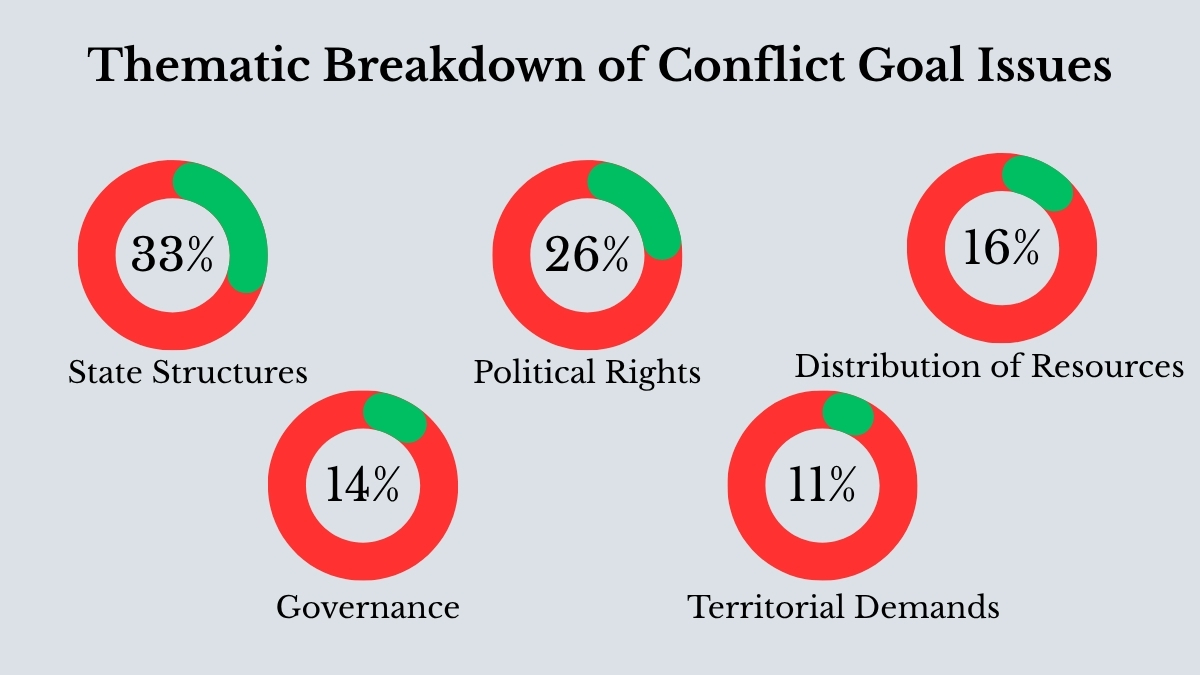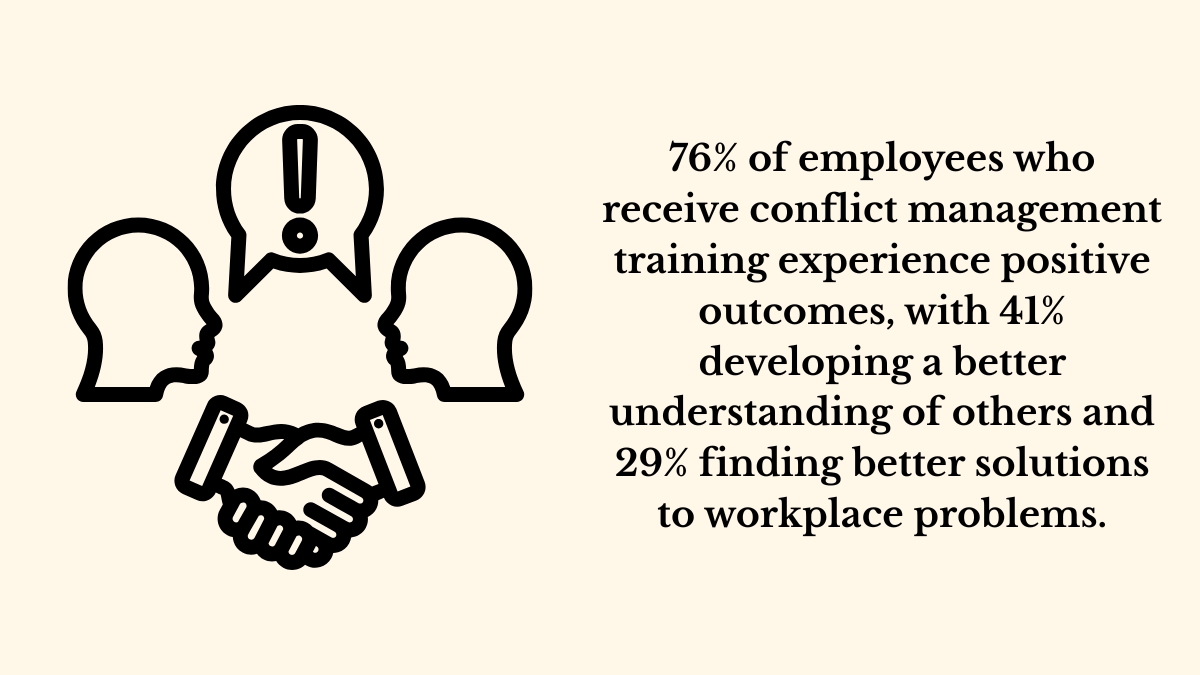In today’s fast-paced workplace environments, managing conflict effectively is crucial for organisational success.
Employees in United States companies spend approximately 2.1 hours each week dealing with conflict, resulting in significant financial losses, with around $359 billion in paid hours focused on conflict rather than productivity.
As organisations strive to reduce the substantial costs associated with workplace disputes, measuring conflict resolution effectiveness has become essential.
By implementing conflict resolution metrics, organisations can gain valuable insights into conflict patterns and areas requiring improvement, ultimately enhancing employee satisfaction and organisational performance.
Key Takeaways
- Understanding the critical role of Conflict Resolution Metrics in modern workplace environments.
- Recognising the financial and productivity costs associated with workplace disputes.
- Implementing conflict resolution metrics to gain insights into conflict patterns.
- Enhancing employee satisfaction and organisational performance through effective conflict management.
- Leveraging conflict resolution metrics to drive organisational success.

The Hidden Cost of Workplace Conflict
The true cost of workplace conflict extends beyond the immediate issues, affecting organisations profoundly. Workplace conflict is a pervasive and costly issue that organisations face, with far-reaching consequences on both financial and non-financial fronts.
Financial Impact on Organisations
The financial burden of conflict on organisations is substantial. According to recent data, the total annual cost of conflict to employers in the UK is approximately £28.5 billion, translating to over £1,000 per employee annually. This cost includes both direct expenses, such as legal fees and settlements, and indirect costs like lost productivity and increased turnover rates. Companies with a healthy corporate culture enjoy a significantly lower turnover rate of 13.9% compared to 48.4% in companies with a poor culture, as reported by Columbia University in 2012.
Productivity and Morale Consequences
Unresolved workplace conflict leads to significant losses in productivity, with employees spending an average of 2.1 hours per week dealing with conflict. This equates to approximately 385 million lost workdays annually in the US alone. Moreover, conflict has a devastating impact on employee morale, causing increased stress levels, decreased job satisfaction, and diminished team cohesion. Studies have shown that 25% of employees have witnessed absence or sickness due to conflict, further contributing to organisational inefficiency.
By understanding the hidden costs of workplace conflict, organisations can better appreciate the importance of effective conflict resolution strategies. The ripple effect of conflict can negatively impact entire teams and departments, creating toxic work environments that further diminish productivity and morale.

Understanding Conflict Resolution Metrics
Conflict resolution metrics are essential tools that help organisations evaluate the effectiveness of their conflict management processes. These metrics enable organisations to track, measure, and assess the progress and outcomes of their conflict resolution efforts.
Definition and Purpose
Conflict resolution metrics are quantifiable indicators that allow organisations to assess the success of their conflict resolution strategies. Common metrics include resolution rate, satisfaction rate, and performance improvement. The primary purpose of implementing these metrics is to provide objective data for evaluating the effectiveness of conflict resolution strategies and identifying areas for improvement.
By using these metrics, organisations can move beyond anecdotal evidence to data-driven approaches in conflict management, enabling more strategic decision-making. This data-driven approach helps organisations understand the impact of their conflict resolution efforts on broader organisational goals.
Why Measurement Matters
Well-designed conflict resolution metrics can significantly contribute to improved workplace culture, enhanced productivity, and better employee retention. Establishing baseline measurements before implementing conflict resolution initiatives is crucial for meaningful comparison and evaluation of outcomes over time.
Effective measurement of conflict resolution outcomes allows organisations to refine their strategies and improve their overall management practices. By regularly assessing and analysing conflict resolution metrics, organisations can identify trends and patterns, making informed decisions to enhance their conflict resolution process and achieve better outcomes.
| Metric | Description | Benefit |
|---|---|---|
| Resolution Rate | Percentage of conflicts resolved within a specific time frame | Indicates efficiency of conflict resolution process |
| Satisfaction Rate | Degree of satisfaction expressed by parties involved | Reflects the effectiveness of conflict resolution strategies |
| Performance Improvement | Improvement in team performance after conflict resolution | Demonstrates the positive impact on organisational productivity |
Key Performance Indicators for Conflict Management
Organisations seeking to improve their conflict management capabilities must first understand the key metrics that indicate success. To effectively measure conflict management performance, organisations should employ a combination of quantitative and qualitative metrics.
Quantitative Metrics
Quantitative metrics provide concrete data that can be used to assess the effectiveness of conflict management strategies. These include:
- Number of conflicts reported
- Resolution time
- Recurrence rate
- Cost savings
By tracking these metrics, organisations can identify trends and measure the return on investment (ROI) for their conflict resolution initiatives. Quantitative data provides a clear, numerical insight into conflict management performance, enabling organisations to make informed decisions.
Qualitative Metrics
While quantitative metrics offer numerical insights, qualitative metrics capture the human elements of conflict resolution. These include participant satisfaction, relationship improvement, learning outcomes, and cultural impact assessments. These metrics provide a more nuanced understanding of conflict management effectiveness, highlighting areas for improvement and measuring the intangible benefits of conflict resolution strategies.
By combining both quantitative and qualitative metrics, organisations can create a holistic measurement framework that captures the full scope of their conflict management performance. This comprehensive approach ensures that organisations can assess both the tangible and intangible aspects of their conflict management strategies.

Implementing a Conflict Resolution Measurement Framework
To enhance conflict management, organisations must establish a robust framework for measuring the effectiveness of their conflict resolution strategies. This involves a systematic approach to defining success, setting appropriate metrics, and analysing data to inform future conflict management decisions.
Setting Clear Objectives
Establishing clear objectives is the foundation of an effective conflict resolution measurement framework. These objectives should align with the organisation’s overall goals and values, ensuring that conflict management efforts support broader organisational objectives. By setting clear objectives, organisations can focus their measurement efforts on what matters most.
Choosing Appropriate Metrics
Selecting the right metrics is crucial for assessing conflict resolution effectiveness. Organisations should choose metrics that are relevant, measurable, and actionable. Examples include conflict frequency, resolution time, and employee satisfaction surveys. A balanced mix of quantitative and qualitative metrics provides a comprehensive view of conflict management performance.
| Metric Type | Examples | Benefits |
|---|---|---|
| Quantitative | Conflict frequency, resolution time | Provides numerical data for analysis |
| Qualitative | Employee satisfaction surveys, feedback forms | Offers insights into employee perceptions and experiences |
Data Collection Methods
Effective data collection is vital for a successful conflict resolution measurement framework. Organisations can use various methods, including surveys, interviews, observation, and documentation review. Each method has its strengths and limitations, and a combination of approaches often yields the most comprehensive insights.
By implementing a robust conflict resolution measurement framework, organisations can enhance their conflict management processes, leading to improved workplace relationships and productivity. Regular review and adjustment of the framework ensure it remains effective and relevant to organisational needs.

Analysing Conflict Resolution Data
Analysing conflict resolution data is crucial for understanding organisational dynamics and improving conflict management strategies. By examining the data, organisations can uncover the root causes of conflicts and develop evidence-based solutions.
Identifying Patterns and Trends
To effectively analyse conflict data, organisations must identify patterns and trends. This involves using various techniques to uncover meaningful correlations within the data. By doing so, organisations can distinguish between isolated conflict incidents and systemic issues that may require broader organisational interventions or policy changes.
For instance, analysing data over time can reveal whether conflicts are increasing or decreasing, and whether certain departments or teams are more prone to conflicts. This information is vital for targeting conflict resolution efforts effectively.
Interpreting Results Effectively
Interpreting conflict resolution data effectively requires more than just identifying patterns; it involves understanding the context and underlying factors that contribute to conflicts. Organisations must consider various contextual factors, including organisational changes, external pressures, or demographic shifts that may influence conflict patterns.
Benchmarking conflict resolution metrics against industry standards or historical performance provides valuable context for interpretation. This comparison enables organisations to assess their conflict management strategies’ effectiveness and make informed decisions about future improvements.
By translating data analysis into actionable insights, organisations can enhance their conflict management strategies, leading to a more harmonious and productive work environment. Effective analysis and interpretation of conflict data are essential for leveraging resolution metrics to drive continuous improvement.

Case Studies: Successful Application of Conflict Resolution Metrics
Through the lens of various case studies, we can observe the significant impact of conflict resolution metrics on organisational success. Companies with a healthy corporate culture report, on average, a turnover rate of just 13.9 percent compared to 48.4 percent at companies with a poor culture (Columbia University, 2012). This stark contrast underscores the importance of effective conflict resolution in the workplace.
Corporate Environment Examples
Several organisations have successfully implemented conflict resolution metrics, leading to improved workplace environments. For instance, a multinational corporation introduced a comprehensive conflict resolution training program that included communication skills and de-escalation techniques. As a result, they observed a significant reduction in workplace conflicts and an improvement in employee satisfaction.
Another example is a mid-sized company that tailored its measurement framework to address specific conflict patterns within the organisation. By doing so, they were able to identify key areas for improvement and implement targeted strategies, leading to enhanced productivity and stronger team cohesion.
| Organisation | Conflict Resolution Strategy | Outcome |
|---|---|---|
| Multinational Corporation | Comprehensive training program | Reduced workplace conflicts |
| Mid-sized Company | Tailored measurement framework | Enhanced productivity and team cohesion |
Lessons Learned from Implementation
The implementation of conflict resolution metrics has taught organisations valuable lessons. Successful conflict resolution implementation often involves communication skills training, de-escalation training, and best practices training that emphasizes learning how to have challenging conversations. Organisations have also learned the importance of contextual adaptation, tailoring their approaches to address specific conflict patterns and organisational needs.
Key lessons learned include the need for continuous monitoring and evaluation of conflict resolution strategies, the importance of leadership buy-in, and the value of fostering a culture that encourages open communication and feedback.

Challenges in Measuring Conflict Resolution Success
Organisations face numerous challenges when attempting to measure the effectiveness of their conflict resolution strategies. The complexity of workplace dynamics and the subjective nature of conflict make it difficult to establish clear metrics for success.
Common Obstacles
Several common obstacles hinder the measurement of conflict resolution success. One significant issue is the reluctance of employees to report conflicts, with approximately 75% of those experiencing discrimination or conflict choosing not to report it due to fear of retaliation. Additionally, managers often spend a considerable amount of time resolving workplace conflicts, with at least 25% of their time dedicated to this task.
- Difficulty in quantifying qualitative aspects of conflict resolution
- Resistance to reporting incidents
- Privacy concerns related to data collection
- Attributing positive outcomes directly to conflict resolution initiatives
| Obstacle | Description | Impact |
|---|---|---|
| Reluctance to Report | Fear of retaliation or negative consequences | Inaccurate data on conflict incidence |
| Time Investment | Managers spend significant time resolving conflicts | Reduced productivity and increased costs |
| Qualitative Measurement | Difficulty quantifying the impact of conflict resolution | Challenges in evaluating the effectiveness of conflict resolution strategies |
Overcoming Measurement Challenges
To overcome these challenges, organisations can implement several strategies. Creating a psychologically safe reporting environment can encourage employees to report conflicts without fear of reprisal. Mixed-method evaluation approaches can provide a more comprehensive understanding of conflict resolution effectiveness. Establishing realistic timeframes for observing meaningful change is also crucial.
By adopting these strategies and acknowledging the measurement challenges, organisations can improve their ability to assess the success of their conflict resolution initiatives.
Conclusion
In the realm of conflict resolution, metrics serve as a guiding light, illuminating the path to improved workplace relationships and productivity. By adopting a data-driven approach to conflict management, organisations can move beyond reactive responses to proactive strategies that address root causes and prevent recurring issues.
The critical importance of conflict resolution metrics lies in their ability to create healthier, more productive workplace environments. Regular measurement, analysis, and adjustment foster a virtuous cycle of increasingly effective conflict management practices, driving improvement and informing best practices.
Organisations can utilise these metrics to inform broader organisational development initiatives, including leadership training, communication protocols, and policy revisions. By doing so, they can fine-tune their approaches to management, ultimately leading to reduced costs, enhanced productivity, improved morale, and strengthened workplace relationships.
We urge organisations to invest in robust conflict resolution measurement frameworks, emphasising the substantial return on investment. By sharing training results and requesting feedback, organisations can continually refine their strategies, ensuring a positive and productive work environment.




